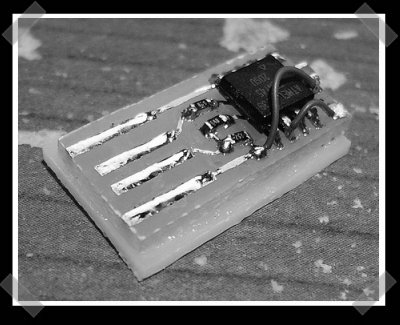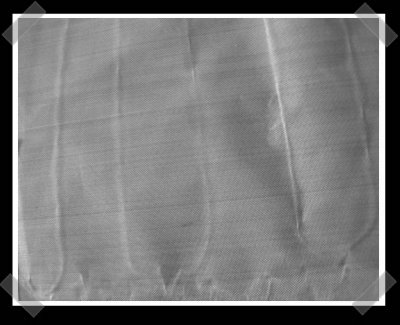[youtube=http://www.youtube.com/watch?v=MD_-YnFZFP8&hl=en]
I found this while looking for a teardown of a Wii Nunchuck remote since they’re cheap and include a 3 axis accelerometer. I mentioned an interface board the other day, but the responsiveness of the interface in this video grabbed my attention. If you like it, you should check out this [via] Nunchuck Arduino RF controlled robot. You can find details on that bot here. The accelerometer itself only runs about $10, but it’s a pretty small SMD part.
Misc Hacks4186 Articles
FRS Foxhunting For Model Rockets

Since we had a FRS radio hackit a while back, [Weirdguy] sent this in. [Scott] gutted a frs radio and added it to his rocket chassis. It’s powered on for the flight, and he can listen to the rockets progress. To locate the rocket once it’s on the ground, he built a 462Mhz Yagi antenna to use with a Radio Shack hand held scanner. This is old hat for most Ham Radio guys – they do ‘Fox Hunts‘ for hidden transmitters just for fun.
Beer-30, OLED Style

[Matt] built this OLED display based clock for his electronics class. He used an ARM7 processor, designed a nice custom board for it and got busy. The clock face is actually a picture of the watch, and the hands are drawn on top as the time changes. Here’s to the first OLED project on Hack-A-Day.
MIDI Controlled Xmas Bells
This video is [Jim]’s 12 year old [Adam] describing a modded a set of electronic christmas bells that take midi input thanks to a propeller controller. Looks like [Jim] helped a bit, but it looks like a great way to introduce young minds to hardware hacking. You can grab details on the board design here.
Random USB Caps Locker

This is one of the most original April fools gags I’ve seen. [Garrett] sent in his USB caps locker. It’s built from an ATTiny45 and puts out an intermittent signal to set the caps lock key. Considering what day it is, it appears to be legit. After you’re done screwing with your co-worker for the day, you might be even more interested in the easylogger project that it’s based on.
DIY Heated Vest/clothing

[Jared] sent in his experiment in building his own heated vest for motorcycle riding. He used some of the ever so common enamel coated wire and some surplus teflon tape in place of Teflon coated wire. So far he’s been testing things out with a bench power supply, but it seems to be working. Despite my love of building my own stuff, I’d probably just pony up for a commercial product. His site is hosted on his DSL, so I’ve put up a mirror here. (with some tweaks to the thumbnails to make them load faster.)
PCB Milling Hell Sunday Extra

I’ve spent about 18 of the last 24 hours working on milling a PC board for my upcoming how-to. So far I’ve murdered several copper clad boards, built a hold down table, redesigned the board in eagle at least five times and snapped off a $15 half round engraving bit.
If you’re wondering, my new board milling table is a piece of MDF that I laser etched a .25″ grid onto, then added some aluminum strips to act as hold-downs. On the side of the strip opposite the board, I put thin slices of PC board to level out the hold downs. As usual, I’m building the board in eagle. To turn the board into something the mill can handle, I’m using pcb-gcode, a nice little g-code generation tool for eagle. I may switch methods later, but if I can get the settings tweaked, it’ll make my design to board milling process very fast.
[Scott] sent in the beginning of his attempt to build a frequency detector. He’s started out with just simple LCD matrix. Nothing intensely interesting just yet, but I like it when people send in stuff they’re working on.
If you haven’t checked out the Arduino yet, do it. It’s the easiest micro controller dev platform I’ve seen. If you’ve got one, now you can hook up a Wii-Nunchuck to it. If you like smaller and cheaper, check out [ladyada]’s boarduino.
[eliot] wanted me to mention this video on hacking drive through speakers. It’s a bit cheesy – and all I could think of was Thunder Run – where the geek character swapped the crystals in the CB radios. (Warning, The FCC might have some expensive words for you if you get caught.) Update: this is what you get if you don’t watch the entire video and catch the joke about taking apart toasters.
Tomorrow I should be picking out some winners for my laser etched laptop (or whatever) offer. You can still win some free etching time! Just send in a tip! The winners are selected from the ones that get published on Hack-A-Day.










